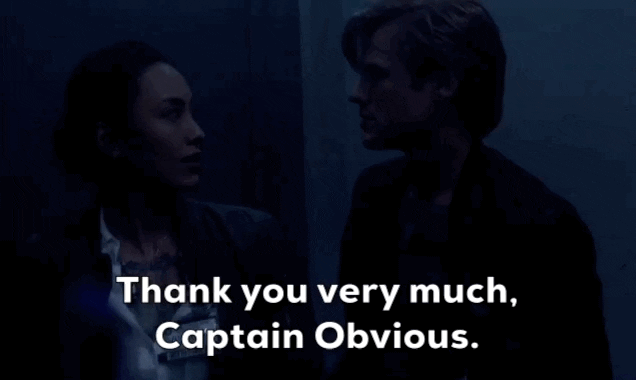What do “Survivor,” “Fear the Walking Dead,” or “Naked and Afraid” have in common? Well, as soon as survival starts, they look for water.
It’s literally the first thing a human does when returning to his primal instinct.
How do we bring that sense back into the life of 330 Million Americans? That’s the question we’ll try to answer with my first tip.
(and that will hopefully pave the path to solving the Water Crisis in America)
Table of contents
- 1 – Better Communicate about the Water Challenges
- 2 – Explain how the Private Sector can and is willing to help solve the Water Crisis
- 3 – Get better at Communication
- 4 – Get Better at Marketing
- 5 – Increase the Water Sector’s attractiveness
- 6 – Empower a New Generation
- 7 – Copy what works
- 8 – Walk the Talk
- 9 – Strive to Influence
- Conclusion
1 – Better Communicate about the Water Challenges
Oh bravo! That’s so easy; it’s a pity no one ever thought of it before a french genius suggested it!

I know. Don’t be mad; let me explain.
To get a sense of what we’re discussing here, see what a student I met in New York shared:
We get it; the water sector is lame at communicating the challenges it faces. But to quote Mark Zuckerberg: “don’t be too proud to copy!”
The Water Sector can emulate what worked for others
Why would we always want to reinvent the wheel? Let’s just apply what worked for other sectors and verticals.
Look at Climate Change Mitigation: its “Zero Carbon” rallying call is known to everyone. Where’s our equivalent for water?
If we find it, Meshal Alduraywish‘s plea will come true:
2 – Explain how the Private Sector can and is willing to help solve the Water Crisis
One risk with the daunting water challenges we face is to give people the impression that it’s a lost cause. Doom and gloom only work to a certain extent; we also need hope.
So now, imagine that a significant portion of the solution comes with a bad rap.
People have seen Netflix’s “Rotten” and are now convinced “Big Water,” and the private bottled water moguls are Mephistopheles’ reincarnation.

You know what? It may be, I honestly don’t know – and don’t bother.
Because private capital’s involvement in solving the water infrastructure, quality, and delivery challenge is an entirely different topic!
The knowledge gap around Private Capital’s involvement in Water
As James Rees recalls:
We have to know where we’re starting from:
And indeed, those are the kind of things we hear on a regular basis. While I was in New York, I got contacted by the Epoch Times to comment on private capital’s rampant takeover of America’s Water. Bonus points if it were foreign money!
The Problem isn’t Private Capital but repeated underfunding of America’s Water Sector
All concerns are always legit – I believe having a critical eye is always beneficial. Yet, one must also remain objective: the recent catastrophes that hurt the American Water Infrastructure had much more to do with repeated public underfunding and natural disasters than with a greedy private sector taking over. Something Seth Siegel has been vocal about:
As James Rees and Seth Siegel suggest, we will have to keep explaining how it will take a village to solve the mess we’re in. And that the private sector is an essential stakeholder in this village willing to do its part.
I hope I can convey that message as efficiently as the “Rethinking Water” conference did for some of the students I met:
Now to spread the message, we may also need to…
3 – Get better at Communication
That’s absolutely true, and it is probably not so much of an issue, as Seth Siegel and his peers are doing a terrific job at representing us on these bigger scenes.
But that doesn’t prevent every single of the 1.3 (or 1.7 – depending on the definition) million water professionals from contributing to the communication effort.
How can it be that if anyone’s vegan or investing in crypto, all his relatives know about it while people living with water professionals still believe water appears by magic at the tap and disappears when we flush?

I’m being extreme on purpose, but there’s pride to have in providing 330 million US citizens with reliable, pure, and wholesome water. And in protecting the environment with state-of-the-art wastewater treatment.
It doesn’t stop at advocacy
That’s step 1 in better water communication: global sector advocacy.
But it doesn’t stop there, as Sarah Kapnick underlines:
That’s step 2: more and better transparency. There’s hardly an element that’s as closely tested and monitored as drinking water – why is it still so difficult for an end user to know about it?
And that’s just the tip of the iceberg. Digital tools are ready to help; it’s about time to reap their benefits!
4 – Get Better at Marketing
Yet another communication topic? Not at all. Let’s define marketing with Tom Rooney:
That sounds so trivial when Tom explains it. But it is the critical hurdle we have to overcome as a sector to finally unlock the trillion dollars we discussed in Chapter 2.
Why would anyone in his right mind invest such an amount in water without expecting at least a minimal return on investment?
Water is a profitable investment space, and we must repeatedly outline its value proposition so that anyone gets convinced first that it’s true and second that it’s excellent news!
We’ve seen in Chapter 1 how there’s a 5-1 expected return on investment for water projects in the US, given we solve our wrong pocket symptom.
And if everyone agrees that there’s a value proposition justifying a 500x more expensive bottled water without a frown, it shouldn’t be impossible to do the same for tap water!
5 – Increase the Water Sector’s attractiveness
We’ve seen how money is not the only good we struggle to attract in the Water Sector: we also face a Silver Wave.
Yet, there are incredible stories to write about the coolness of our sector!
On the material side, it’s one of the best-paying sectors for the lowly qualified workforce – according to the Brookings Institute, it pays up to 50 percent more to workers at lower ends of the income scale.
Starting a water business doesn’t require a marketing make-up to turn a “Candy” into a “Vitamin” – as a standard, almost every water business is by definition a “Painkiller!”

The Water Sector IS a Painkiller!
And what’s cooler than explaining to everyone that you simultaneously save their lives on a daily basis by providing safe drinking water, save their jobs by ensuring the American industry stays water and climate-change resilient, and protect the environment and its natural services by treating wastewater?
Oh, I see; Silicon Valley’s cooler. But is it really? Errick Simmons has its doubts:
And unlike Amazon, Twitter or Facebook, our sector isn’t firing anyone anytime soon. You mad, Tim Cook?

6 – Empower a New Generation
On the same line of thought, we need not only to attract people to the Water Sector but also to get young people.
First, as we’ve just seen because we simply need more workforce. But also and above because we need a fresh breeze, mindset, and rebalance of the age pyramid.
I’ve explained how solving the water challenges will take a village: universities will have to play their role in this village.
Universities will need to play their role
As Paul Gallay recalls:
If we follow the traditional approach and climate change doesn’t impact us beyond what we expect, we need one trillion dollars to bring the system in balance.
Yet, that’s two strong conjectures: hoping for climate disruption to go as planned and betting on a trillion dollars when a once-in-a-lifetime infrastructure bill just capped at ten times less.
A way to take control of our destiny here may be to double down on innovation, speed of adoption, and replication of best practices.
Who better than a young generation to help achieve precisely this?
7 – Copy what works
I just mentioned this replication of best practices, and I already quoted Mark Zuckerberg’s famous unofficial Facebook motto: “don’t be too proud to copy.”
Well, really, we shouldn’t bother reinventing the wheel when it already exists in our cousin or adjacent sectors:
… and it’s on you to take this as good news. Are they seven years ahead? Awesome, that means we already have a seven-years plan!
… looking for instance at Energy or Sustainability
Is decentralized water and wastewater treatment a good idea? Well, if energy’s microgrid is, that’s a clear hint.
Is circular water management going to hold water? Well, if the entire World switches to reinforced circularity, why would it be any different for us? And so on!
That also means we shouldn’t behave as a silo. Many of the most brilliant minds I got to meet on my podcast have built awesome things in water coming from an adjacent or sometimes even entirely different sector.
That’s not a threat: that’s a blessing!
8 – Walk the Talk
I know, it’s annoying to hear me preaching what shall be done. It’s so easy, right?
This is why walking the talk is so important. Sure, the water sector by itself doesn’t consume so much water, but still, as Patrick Decker underlines:
We’re all getting familiar with the concept of a footprint – be it carbon or water. What Patrick Decker suggests here is that we shall take care of our handprint.
Not that it significantly changes the balance, but because it sends a message: what we suggest others to do, we first apply it to ourselves!
9 – Strive to Influence
For all of this to be successful, we need to get the word out. I already mentioned how each water professional shall make it his mission to explain to everyone he’s coming across what needs to be said about water.
But we also need to invest in the next stage:
I’m not saying we need a Kim Kardashian of water; I’m not even sure that would help much. But we need to empower water professionals to go past the Dunning-Kruger syndrome and share their knowledge.
We can all stand up and speak up!
The water challenges won’t solve themselves all alone, and governments, corporations, or trade associations won’t succeed on their own.
We need each of us to surpass our fears, overcome the apprehension to speak up, and tell the World what we know best: there are solutions to these daunting water threats.
To that extent, we shall get inspired by approaches like Seth Siegel‘s:
Doom and gloom have their merits: it’s an opportunity to open everyone’s eyes. But once they’re open, we have to also show solutions – and we know plenty, as I exposed in this entire series.
Conclusion
Good news: it turns out that Rubik’s Cube is possible to solve! Yes, the tiles are mixed, and yes, it might sometimes be quite intricate, but there is a path to success.
First, we have to acknowledge the challenge: the broken infrastructure, broken policy, broken economics, and the sector’s conservatism.
But that’s not a definitive doom! Each of these challenges comes with its own solution. If we fix the broken economics, we will have the leverage to fix the broken infrastructure and prevent it from breaking further. And if policies get installed and enforced, the economic layer will have its ideal counterpart to grow sustainably.
Now, for the conservatism, I guess if you’ve read thus far, you’re probably part of the sector’s fraction that wants to move the needle and get things done. Let’s not worry too much about the others: if we’re convincing enough, they will follow our steps. We can do this, right?
Water can be profitable and that incentive can do wonders
Let’s prove to everyone that water can be a sustainably profitable field where the right blend of the right capital can make the most impact.
Private capital and private know-how will do miracles if allowed to, while public means will round it off, supported with new approaches like philanthropic involvement, when needed.
None of these sources have the power to rock the boat all alone, but blended, we know them to be unstoppable.
Will tomorrow’s infrastructure resemble the existing one? Probably not. The World’s digitization also opens new perspectives for the water sector and from point of use treatments to point of entry or distributed assets; one thing’s for sure, the solution will be widely decentralized.
This doesn’t mean we shall disrupt what works – the system will simply evolve over time and tend to that new equilibrium where water fit for purpose will be produced much closer to its users.
Tomorrow starts today!
To get the ball rolling, we will need to become world-class at communication, marketing, and education. I guess it boils down to allowing us to influence the World we live in for the better.
Again, if we walk the talk and bring a new generation on board, I don’t see anything preventing us from striving in the future.
Yet, the water world is a moving target, and it keeps evolving under the influence of a lot of internal and external factors. So, if you want to keep up with that wind of change, I’d be happy to support you: just subscribe to my podcast, and I’ll have you covered.
These final words conclude 6 months of intense work on the rethinking the American water scene shall undergo. I hope you’ve enjoyed hopping on that journey with me – if you did, the best reward you can give me is to link to this (free forever) resource.
I’m sure you will help me spread the word, so let me conclude with these last two words: thank you!



1 thought on “9 Tips to Solve the Water Crisis FAST”